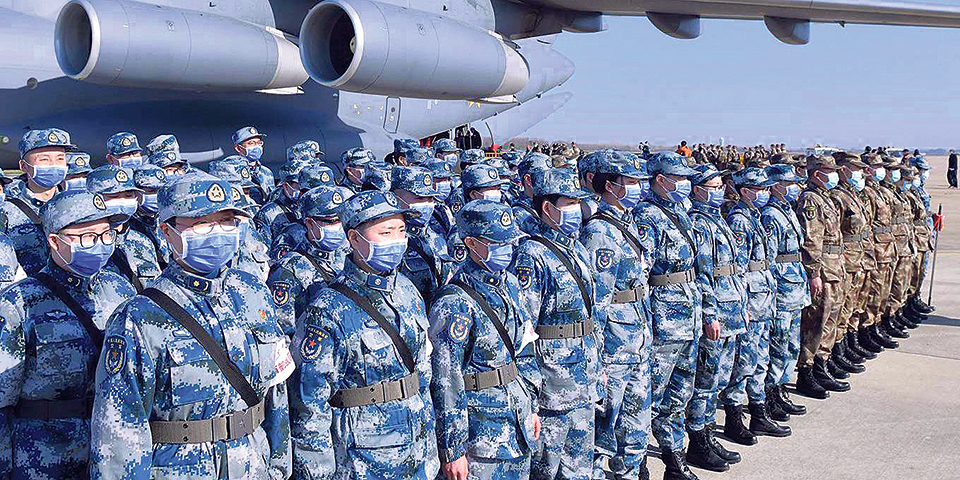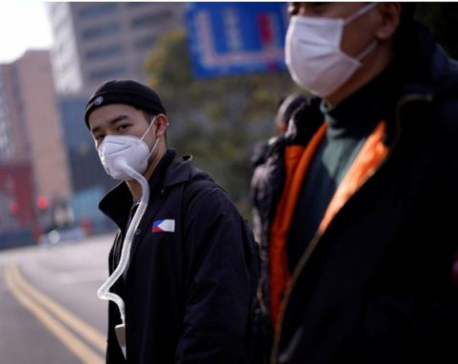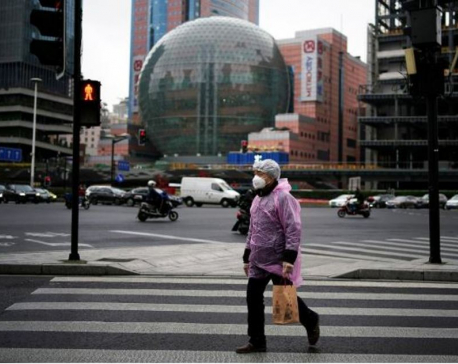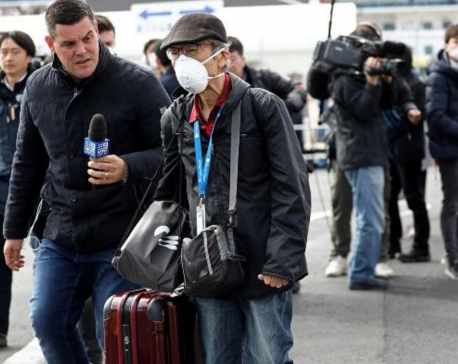
OR

More from Author
At a time of unprecedented global interconnectedness, our biggest challenges are shared. Every country must work to build its resilience, or no one will be safe
HONG KONG – Last October, the 2019 Global Health Security Report included a stark warning: “National health security is fundamentally weak around the world. No country is fully prepared for epidemics or pandemics, and every country has important gaps to address.” Just a couple of months later, a new coronavirus emerged in Wuhan, China—and quickly demonstrated the accuracy of the report’s assessment.
The virus, now called COVID-19, was first discovered in China’s Wuhan municipality, but was not taken sufficiently seriously by the authorities in the early weeks. Multiple mistakes being made, including the failure to comprehend the virus’s speed of transmission, compounded by the delay in informing the public about the outbreak. In fact, some who first warned of the disease—most notably the ophthalmologist Li Wenliang—were reprimanded by local authorities. (Li subsequently died of the disease.)
It was not until January 20 that the government acted, after another doctor, Zhong Nanshan—a hero in China’s fight against the 2003 outbreak of another coronavirus, severe acute respiratory syndrome (SARS)—alerted the public of the seriousness of the new virus. Wuhan and neighboring cities in Hubei province—with a total population of some 58.5 million people—are now in complete lockdown. Across China, as many as 700 million people are largely confined to their homes.
China’s government subsequently mobilized more than 200 medical teams from around the country, including from the military, to help contain the disease. It also built three new hospitals, and nine temporary hospitals, with unprecedented speed. And it gave provincial, municipal, and county-level governments strict instructions on improving public hygiene, isolating possible victims, and sharing experience and expertise.
China’s unprecedented responses appeared to have slowed the spread of the disease domestically. But densely populated Wuhan is a transportation hub, home to central China’s biggest airport, from which roughly 30,000 people, on average, depart daily. This means COVID-19 can and has spread around the world rapidly, testing the public health response capacity of countries far and wide.
As of February 25, the World Health Organization reports 80,239 cases in 33 countries, and 2,700 deaths (a 3.4 percent mortality rate). Hubei province accounted for the most cases, and 95 percent of the fatalities.
South Korea is now second to China for COVID-19 infections, with 1,261 confirmed cases. The government has placed the country on the highest possible alert—a move that allows for lockdowns and other containment measures. The southeastern city of Daegu, where cases are concentrated, has essentially been under a state of emergency. Japan, with 847 cases (around 700 from a single cruise ship) is third on the list.
The virus is also gaining ground in Europe, with 325 cases confirmed in Italy. The country has now quarantined more than 50,000 people. Even Iran is facing an uptick in infections. Hopes that a pandemic can be averted are dwindling fast.
All of this is taking a serious economic toll, as global supply chains are disrupted and services halted. Moreover, Japan’s economy—already under pressure from another consumption-tax hike and the fallout from Typhoon Hagibis—seems likely to contract even further.
In South Korea, a key hub in global supply chains, Samsung Electronics has suspended smartphone plant operations in Gumi after an employee tested positive for COVID-19.
After Apple warned that its quarterly revenues will take a hit, owing to slowed iPhone production and the closure of Apple stores in China, global investors are getting nervous. In the United States, the S&P 500 dropped nearly three percent at the start of trading on February 24.
With the outbreak still escalating, the global damage will run deeper than supply-chain disruptions. The sudden reduction in production and services is driving a shift in consumption patterns and business operations in China toward e-commerce and tele-commuting—a trend that may be mirrored in other affected countries as the virus spreads.
The economic effects of this shift—including changes in Chinese demand for travel, tourism services, and luxury goods—will reverberate globally for months to come. But the more profound effect of the COVID-19 lockdown is on Chinese social dynamics.
An unprecedented number of Chinese, up to half of the population, have been trapped indoors for more than a month, with time to reflect on the disease’s consequences for life, family, and society. However difficult the lockdown has been, they have been able to count on their government to deliver power, water, and online services reliably. Of course, the government has also faced plenty of criticism on social media for its early attempts to suppress critical information. But it has since allowed more open debate and feedback, as in-depth reports by Caixin magazine have shown.
The COVID-19 crisis has shaken the belief that economic prosperity can compensate for social well-being. Death in one-child households terminates the whole generational lineage, something unprecedented in Chinese family history. As a result, Chinese may reorient themselves toward health, home, and family, after years of rising travel and offline consumption.
The global media frenzy, some tinged with coronavirus-fueled xenophobia, could reinforce China’s self-reflection and self-strengthening impulses, particularly in sorting out domestic public health, social security, and governance issues. Already, COVID-19 has led to swift domestic damage control and a massive re-orientation of priorities, such as innovative ways of dealing with business cash flows, survival of SMEs, job disruptions, and restoring key supply chains.
But even when the virus is contained, escalating geopolitical rivalries, technological disruption, climate change, and the likelihood of new pandemics loom. So, beyond tackling the current crisis, China’s government should be working on long-term resilience-building reforms in education, health care, the social safety net, and internal feedback mechanisms. The public expects no less.
The same is true worldwide. At a time of unprecedented global interconnectedness, our biggest challenges are shared. Every country must work to build its resilience, or no one will be safe.
Andrew Sheng is Distinguished Fellow of the Asia Global Institute at the University of Hong Kong and a member of the UNEP Advisory Council on Sustainable Finance. Xiao Geng, President of the Hong Kong Institution for International Finance, is a professor and Director of the Research Institute of Maritime Silk-Road at Peking University HSBC Business School
© 2020 Project Syndicate
www.project-syndicate.org
You May Like This

As new cases of coronavirus subside in China, Wuhan told to go back to work
BEIJING/SHANGHAI, March 11: Some key industries in Wuhan, the Chinese city at the epicenter of the coronavirus epidemic, were told... Read More...

China's President Xi visits Wuhan as number of new coronavirus cases tumbles
BEIJING, March 10: Chinese President Xi Jinping visited Wuhan, the epicentre of the coronavirus outbreak, on Tuesday, marking the first time... Read More...

Quarantined passengers disembark ship in Japan; new China coronavirus cases fall
BEIJING/TOKYO, Feb 19: Hundreds of people began disembarking a quarantined cruise ship off Japan on Wednesday as the death toll... Read More...






Just In
- Challenges Confronting the New Coalition
- NRB introduces cautiously flexible measures to address ongoing slowdown in various economic sectors
- Forced Covid-19 cremations: is it too late for redemption?
- NRB to provide collateral-free loans to foreign employment seekers
- NEB to publish Grade 12 results next week
- Body handover begins; Relatives remain dissatisfied with insurance, compensation amount
- NC defers its plan to join Koshi govt
- NRB to review microfinance loan interest rate












Leave A Comment